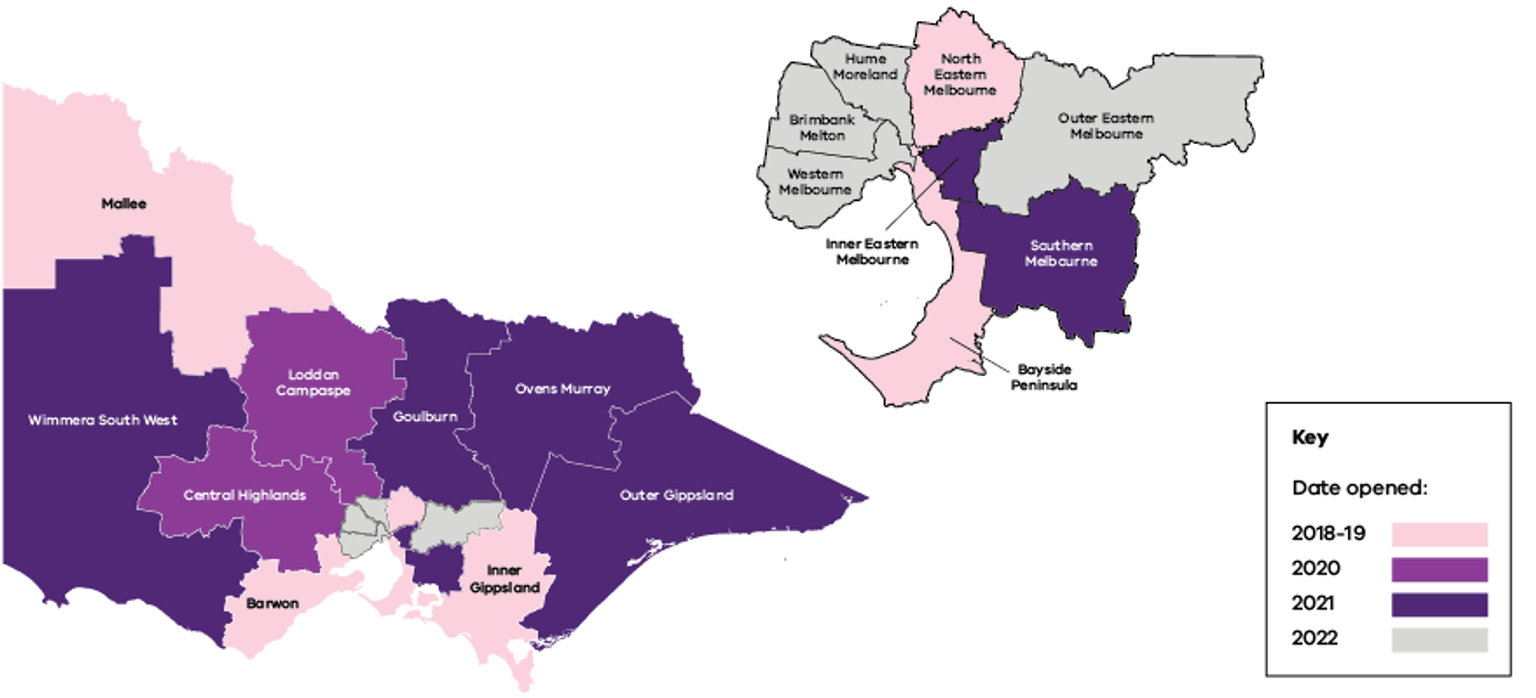The Orange Door network is the first of its kind. It brings together intake for specialist family violence, child and family, Aboriginal and perpetrator services. It aims to provide accessible and safe services for people experiencing family violence and for children, young people, and families in need of support.
It is delivered in partnership between community service organisations including Aboriginal services, and the Victorian Government.
The Orange Door network is an important shift in the way Victoria works with family violence victim survivors, and for families who need support with the care and wellbeing of children and young people.
It aims to be accessible, safe and welcoming. It provides tailored support for:
- adults, children and young people who are experiencing family violence
- families who need support with the care and wellbeing of children and young people
- perpetrators of family violence.
It brings services together as a partnership alongside government, which means individuals and families do not have to go to multiple services. They do not need to retell their story multiple times to have their needs met.
The Rolling Action Plan focuses on:
- continuing the roll out of The Orange Door network across the state
- strengthening Aboriginal responses
- planning the transition to the full service model
- improved data monitoring and reporting
- continuous improvement and evaluation.
What has happened
Since it commenced in May 2018, The Orange Door has supported over 200,000 people, including 80,000 children. This has provided people with access to immediate and longer-term supports. These range from crisis support to case management and counselling.
The Orange Door network has continued to roll out across the state. As of 2021, it is operating in 13 of the 17 Department of Families, Fairness and Housing areas across Victoria.
Even with the challenges presented by the COVID-19 pandemic, service commenced in two areas in 2020 and a further six areas in 2021.
The Orange Door network is operational in Bayside Peninsula, Southern Melbourne, Inner Gippsland, Outer Gippsland, Ovens Murray, Goulburn, Inner Eastern Melbourne, North Eastern Melbourne, Loddon, Mallee, Barwon, Central Highlands and Wimmera South West (South West).
Access to The Orange Door network is facilitated through networks in each area. These include the establishment of a primary site, access points, outposted services where The Orange Door workers are collocated with other services, and outreach.
Telephone and email options for referrals and to access supports complete the network.
Across the state, there are 12 operational access points1 and four operational outposts.2 In each area, access points and outposts complement the primary premises. This ensures people and communities have geographic access and choices to access services in ways that suit them.
The Orange Door network considers each local context and engages with the right stakeholders for the area.
The following highlights show some of our work to ensure that The Orange Door network embeds Aboriginal self-determination. The highlights also demonstrate how we are continuously improving the operation of sites and the capability of staff.
What is next
The statewide roll out of The Orange Door network will continue. It is expected to be completed by the end of 2022. Hume Moreland opened in February 2022 and implementation is progressing well towards service commencement in the remaining departmental areas of Outer Eastern Melbourne, Brimbank Melton and Western Melbourne, as well as the northern region of the Wimmera South-West Area (Wimmera).
During this implementation phase, existing services will continue to operate in areas until The Orange Door network opens. Specific activities include:
- planning for the delivery of additional access points and outposts
- three Aboriginal Access Points, which are expected to be operational by the end of 2022
- development of agreed and consistent service connections with housing and financial counselling services
- improving our reporting to show The Orange Door network is delivering better outcomes for clients
- an evaluation of The Orange Door network to provide additional insights on what is working well and what we could do better
- continued work to deliver the remaining Victorian Auditor-General’s Office recommendations including:
- finalising and commencing implementation of the Performance Management Framework
- delivering a consistent approach to assessment of children and young people across The Orange Door network
- planning for the transition to delivery of the full service model outlined in the statewide concept
- continuing training development and delivery, including refreshed induction training, and the Strengthening Cultural Safety in The Orange Door project
- finalising the demand management framework, integrated practice framework and improvements to data capture, quality and timeliness.
What this means for outcomes
Notes
1Access points are branded The Orange Door network locations that have at least one permanent multidisciplinary team that delivers the full suite of The Orange Door services.
2Outposts involve a smaller staff cohort operating from a location hosted by a partner agency or community service to deliver support to The Orange Door clients.
Updated
